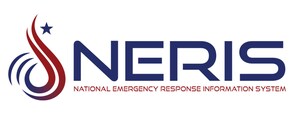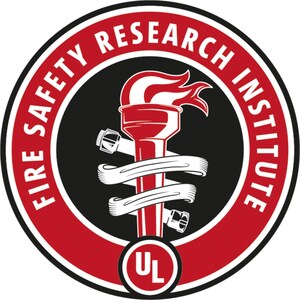Fire Safety Research Institute, FDNY, CPSC, USFA and ATF team up to share safety risks and tips for safer use of lithium-ion battery powered devices
COLUMBIA, Md., Nov. 15, 2023 /PRNewswire/ -- Fires from lithium-ion battery-powered devices are increasing at an alarming rate. Today UL's Fire Safety Research Institute (FSRI) launches the Take C.H.A.R.G.E. of Battery Safety campaign with a new PSA and tips to educate people about safer use of lithium-ion battery powered devices. The campaign is being launched in collaboration with The Fire Department of the City of New York (FDNY), U.S. Fire Administration (USFA) and Bureau of Alcohol, Tobacco, Firearms and Explosives (ATF) and with the support of the U.S. Consumer Product Safety Commission (CPSC).
With new technology comes new safety risks. Lithium-ion batteries are powering our lives in more ways than ever before and can be found in cell phones, laptops, power tools and e-mobility devices like wheelchairs, lawnmowers and electric bikes, scooters, and vehicles. Although they offer many advantages, a significant safety concern is the potential for these batteries to catch fire and cause explosions.
Research from FSRI demonstrates that fires in modern homes with synthetic furnishings can have an escape time that's less than three minutes from the time the fire starts. A fire from a larger device with an unregulated lithium-ion battery, like an e-bike or e-scooter, can reduce that escape time to less than one minute.
In addition, since 2017, micromobility injuries have increased every year by an average of 23% per year according to the CPSC. In New York City alone between 2021 and 2023, there has been a significant increase of lithium-ion battery device fires (1,500%), injuries (686%) and deaths (2,675%). According to research provided by UL Solutions, in 2023 there have been at least 445 incidents, 214 injuries and 38 fatalities related to lithium-ion battery fires throughout North America.
"Even when the initial cause of a fire is not a lithium-ion battery, their involvement can increase the intensity and speed of the fire," said Steve Kerber, FSRI vice president and executive director. "Lithium-ion battery powered devices aren't going anywhere and will likely be part of our society for years to come. Our goal right now is to better understand how these batteries impact fire behavior and help people safely use this technology."
To help people enjoy their many lithium-ion battery powered devices safely, FSRI's new safety campaign offers consumers easy steps to Take C.H.A.R.G.E.:
- Choose Certified Products: Only 25% of respondents to a recent survey said they check to see if the products they purchase meet lithium-ion battery standards. When purchasing lithium-ion battery-powered devices, look for products that are listed or safety certified by a nationally recognized testing laboratory to ensure they meet important safety requirements.
- Handle Lithium-Ion Battery Powered Devices with Care: Follow the manufacturer's instructions and only use the charging equipment that comes with the product. Do not modify batteries or chargers. Store and charge batteries away from extreme temperatures, direct sunlight, exits, and anything flammable. Charge larger devices (such as e-bikes) away from your exit path, behind a closed door, away from your sleeping area and/or outside your home, if possible. Do not charge larger devices overnight.
- Always Stay Alert for Warning Signs: Check battery-powered devices often for damage or abuse such as swelling or punctures. Listen for unusual hissing or popping sounds. Watch out for excessive heat or a strange odor. If you notice any of these warning signs, stop using the lithium-ion battery powered device immediately. White or gray wispy smoke indicates there is immediate danger of fire.
- Recycle Devices and Batteries Properly: Responsibly dispose of old or damaged batteries and devices by taking them to the nearest battery recycling center. Never discard batteries, chargers, or battery-powered devices in regular trash bins.
- Get Out Quickly If There's a Fire: Know the warning signs to look and listen for and get out if you see – or hear – them. Follow your home fire escape plan to leave immediately, closing doors behind you as your exit, and call 9-1-1.
- Educate Others on Safe Practices: Help protect your friends and loved ones by sharing how they can Take C.H.A.R.G.E. of Battery Safety.
"Lithium-ion batteries have quickly become one of the leading causes of fatal fires in New York City. We cannot stress enough the importance of safe usage of these devices; it will save lives. We are grateful to partner with FSRI, USFA, CPSC and ATF to raise public awareness, and address a problem we know is not going away," said FDNY Commissioner Laura Kavanagh.
To learn more about lithium-ion battery safety and FSRI's work to advance fire safety knowledge, and watch the new PSA, visit BatteryFireSafety.org.
About Fire Safety Research Institute
As part of UL Research Institutes, UL's Fire Safety Research Institute (FSRI) strives to advance fire safety knowledge and strategies to create safer environments. Using advanced fire science, rigorous research, extensive outreach and education in collaboration with an international network of partners, the organization imparts stakeholders with the knowledge, tools, and resources that enable them to make better, more fire safe decisions that ultimately save lives and property. To learn more, visit fsri.org. Follow FSRI on Twitter, LinkedIn and Facebook.
About the Fire Department the City of New York
The Fire Department of the City of New York (FDNY) is the largest Fire Department in the United States and the Department's main goal is to provide fire protection, emergency medical care, and other critical public safety services to residents and visitors in the five boroughs. Since its inception in 1865, FDNY has helped lead efforts to make New York the safest big city in the nation. FDNY not only responds to more than a million emergencies every year, but its personnel also strive to prevent them by continually educating the public in fire, life safety and disaster preparedness, along with enforcing public safety codes. Learn more at www.nyc.gov/fdny.
About the U.S. Consumer Product Safety Commission
The U.S. Consumer Product Safety Commission (CPSC) is charged with protecting the public from unreasonable risk of injury or death associated with the use of thousands of types of consumer products. Deaths, injuries, and property damage from consumer product-related incidents cost the nation more than $1 trillion annually. CPSC's work to ensure the safety of consumer products has contributed to a decline in the rate of injuries associated with consumer products over the past 50 years. Federal law prohibits any person from selling products subject to a Commission ordered recall or a voluntary recall undertaken in consultation with the CPSC. Learn more at www.cpsc.gov.
About the U.S. Fire Administration
The U.S Fire Administration (USFA) was established by Public Law 93-498, the Federal Fire Prevention and Control Act of 1974. The act called for the establishment of the National Fire Academy to advance the professional development of fire service personnel and others engaged in fire prevention and control activities. The act also called for a national system for the collection, analysis and dissemination of fire data necessary to assist local fire departments to establish research and action priorities. The USFA, as a component of FEMA, has a mission is to support and strengthen fire and emergency medical services and stakeholders to prepare for, prevent, mitigate and respond to all hazards. Learn more at www.usfa.fema.gov.
About the Bureau of Alcohol, Tobacco, Firearms and Explosives
The Bureau of Alcohol, Tobacco, Firearms and Explosives (ATF) is the federal agency with jurisdiction for investigating fires and crimes of arson. The mission of ATF is to protect communities from violent criminals, criminal organizations, the illegal use and trafficking of firearms, the illegal use and storage of explosives, acts of arson and bombings, acts of terrorism, and the illegal diversion of alcohol and tobacco products. Learn more at www.atf.gov.
SOURCE FSRI

WANT YOUR COMPANY'S NEWS FEATURED ON PRNEWSWIRE.COM?
Newsrooms &
Influencers
Digital Media
Outlets
Journalists
Opted In





Share this article